Northern Section
To be held at Trinity Methodist Church, Trinity Road, Sale, Cheshire, M33 3ED at 7.30pm, unless otherwise stated
Return to current year
Meetings - 2018
Horological Ephemera and Christmas Social Evening (December 2018)
Our December meeting was an enjoyable mix of horological ephemera, food and festivities.
Items on display included many which are usually short-lived; catalogues, magazines, advertising materials and booklets containing histories of well known watchmaking brands. These included English clock and watchmakers such as Charles Frodsham and Sinclair Harding and many European brands such as Walter Lange, A Lange & Söhne, Glashütte, Audemars Piguet, Patek Philippe and IWC. We also saw a twenty-one year guarantee certificate from the Lancashire Watch Company dated 1909 and the pocket watch corresponding to it. A watch-case knife from the same company given to customers by travelling salesmen was also displayed.
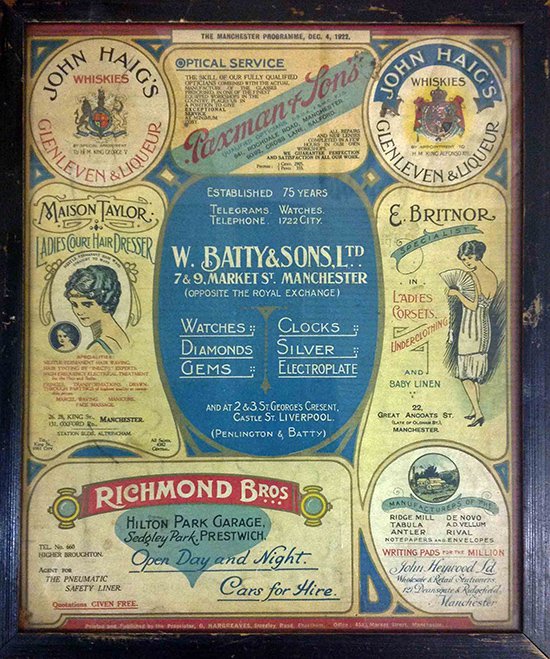

Restoration of a musical clock (November 2018)
How do you go about restoring a wrecked musical table clock dating to c.1755 which has lost its tune barrel, eleven (of its thirteen) bells and many other important parts? Jim Arnfield showed that sufficient information and components remained for him to contemplate its reconstruction. He outlined the painstaking attention to detail required to identify the tunes, notate them and recreate plans to pin a replacement tune barrel, to mark it out and to insert 1,500 pins. Jim made the missing movement parts from brass which he made to the same ‘recipe’ as the original, and eleven bells tuned to the correct notes were sourced. In addition, the clock’s original case had been broken and lost so a specialist case maker constructed a mahogany case to which Jim fitted new gilded cast brass furnishings. The result is a showcase of twenty-first century horological skills.
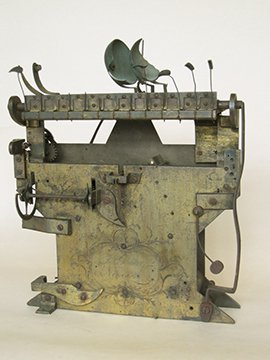


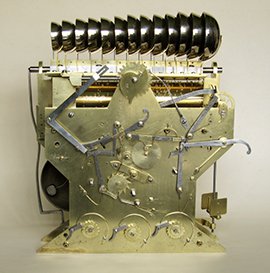
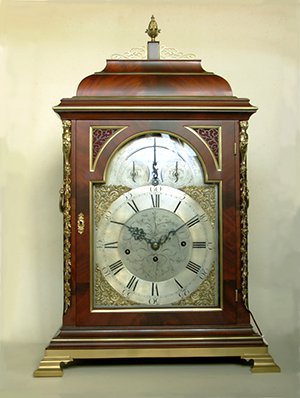
Outing (October 2018)
In October we had a group day-trip beginning with an informal visit to the former Lancashire Watch Company factory at Prescot which has lately undergone a transformation into The Watchfactory development offering independent living for the over 55s. In the foyer, Prescot Museum staff assisted by Northern Section member John Platt, have organised a display focussing on the building’s watchmaking history and there are many references to watches in other areas of the development.
We had been invited to view a private collection in the afternoon. It represents a lifetime's passion for horology comprising pocket watches, table clocks and longcases spanning many years. An interest in the horological products of south west Lancashire was very evident, but London and other parts of the UK were also represented. Members relished the opportunity to handle and photograph the large and impressive collection.
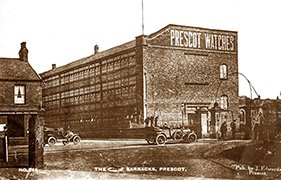


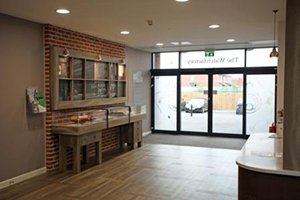
Coventry watches (October 2018)
Most of the evening was spent discussing the watches made by Rotherham and Sons. Of much interest was a watch which was bought by, or for Captain William B Stewart in 1915. He served in a Field Ambulance unit as part of the Royal Army Medical Corps. The captain was killed in May 1917, but his silver wristwatch survives. It is in fine going condition complete with its original leather wriststrap. Rather than design new watch movements when wearing wristwatches became popular, Rotherhams economised by using existing small pocket and fob watch movements with modified cases. The model we were shown opened from the front and the movement hinged out pocket watch-style. It had a three quarter plate movement with a fully compensated balance, Breguet over-coiled spring, was fully jewelled and is an excellent timekeeper.
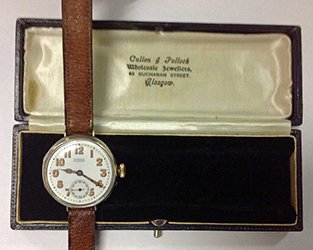
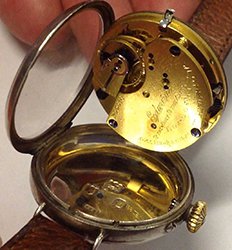
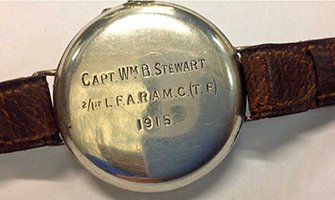

The conservation of turret clocks (September 2018)
Keith Scobie-Youngs gave a fascinating talk on the turret clock conservation methods used recently on clocks from St Mary's Church, Beaumaris and Seaton Delaval Hall. He outlined the latest techniques for treating painted metal and experimental work carried out on heavily corroded and rusted wrought iron and brasswork. Crumbling, decaying woodwork can also be rescued enabling original material to be retained.
The message was clear: conservation requires the safeguarding of a clock's historical integrity; actions need to be reversible and details of work done recorded in a conservation report for future reference.

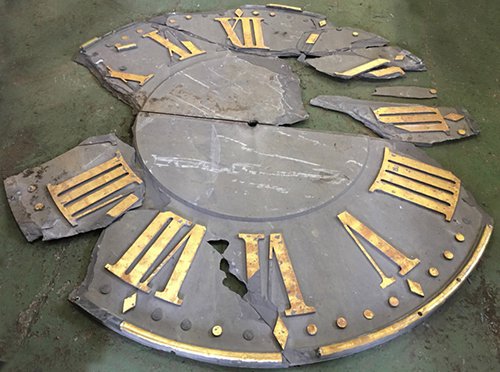
Visit to Cuckooland, Tabley, Cheshire (August 2018)
Over seven hundred cuckoo clocks under one roof! Owners Roman and Maz Piekarski ensured many of the cuckoo clocks in their vast collection had been wound for us so that while telling us about the most interesting ones, their different sounds and calls could be demonstrated. Each clock has its own story to tell, some play tunes, have birds other than cuckoos, have more than one bird or fascinating automata. In addition to the wonderful clocks, there is also a German keyless concert organ which was played for us and a superb collection of vintage motorcycles with sidecars.

Combination clocks/watches – any horological items which do more than tell the time (August 2018)
The weird and the wonderful; the useful and the novel - all were on display for our August meeting. The useful items included: teasmades, a Bakelite bedside lamp-clock, a tic-tac bookie's lockable money bag, a clock-barometer, a ships' clock striking ships' bells and a 30 hour longcase movement which played bell peals. Two luxury watches had multiple dials and a Georgian table clock had an alarm and night silencing. Clocks with sheep, mermaids and stamps provided novelty and for entertainment, a children's Sylvester and Tweetie-Pie wall clock with automatons, a strike and speech! There was something for everyone.
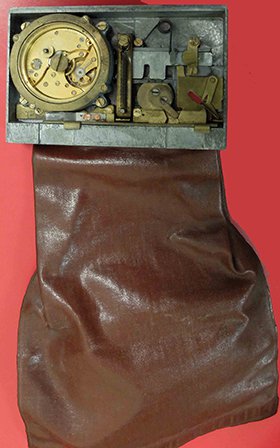
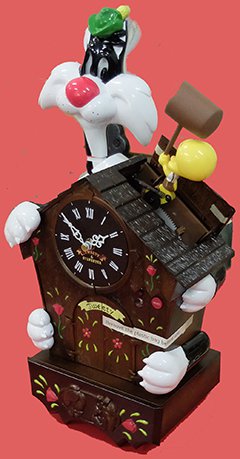

Smuggling Holological Supplies from Switzerland in WWll (July 2018)
Tales of derring-do entertained us in Ian Greaves' talk on the smuggling of horological items from Switzerland to the UK during the hostilities of WWll. Britain required parts and tools we could no longer manufacture to the necessary standards and quantities. Ian outlined how Switzerland's neutrality combined with its continued need for trade with both hostile and allied nations led to smuggling. Vast quantities of vitally important horological items made in Switzerland came to Britain to enable our rearmament thanks to the brave and imaginative routes devised by the Ministry of Economic Warfare.
Marine timekeepers and instruments (June 2018)
Members were treated to a display of four box chronometers, two chronometer watches, six pocket chronometer watches, three wristwatches, several marine instruments, books and photographs. Each item was described by its owner followed by an opportunity for discussion.

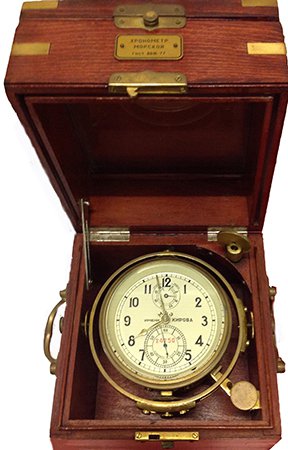
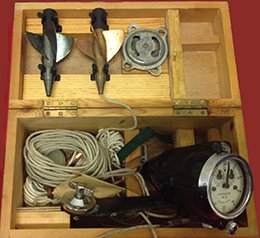
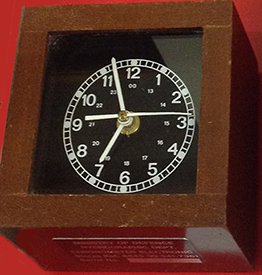
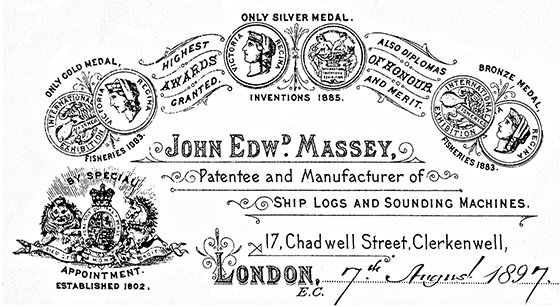
Trip to the Isle of Man (May 2018)
Members of the Northern Section recently enjoyed a visit to a private collection in the Isle of Man.
The collection is housed in a private estate on the island. We began in the Orangery where there were magnificent plants and interesting sundials.
The house is the result of a lifetime's work in engineering, invention and design. Collections of fossils, semi precious stones, paintings and photographs as well as clocks and watches are housed there. Our group toured the collections and was guided around the horological items by Dr JC Taylor. We spent most of the day there and as a thank you, presented a cheque for the Teapot Trust, a charity close to the owner's heart.
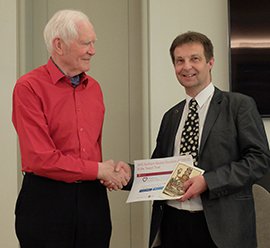

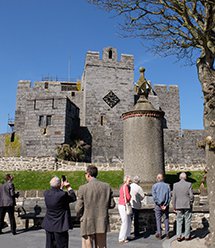
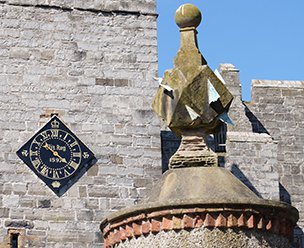
Pendulum clocks of north west Finland (May 2018)
Robin Hill began his talk on pendulum clocks of north west Finland by sketching an image of a sparsely populated country with vast areas of lakeland and forest. Swedish influence is strong, especially in coastal areas where cultures have blended. Finnish clock cases were mostly painted pine decorated with stylised pumpkin flowers in the familiar Swedish Mora curvaceous longcase style. Early examples have all-wooden movements.
Robin introduced the Könni family - four generations of clockmakers who produced a wide variety of clocks, including simple short duration and eight day longcases, some with automata, and turret clocks for prestigious buildings such as Helsinki's Imperial Senate House and Cathedral. He concluded by briefly describing the clocks on display, two of which are pictured below.
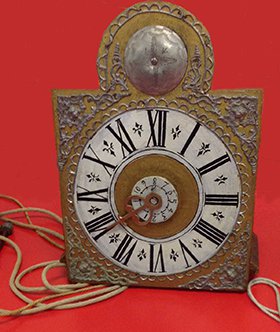


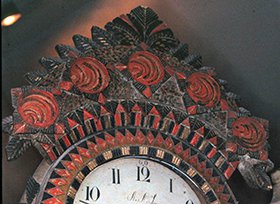

Bring and Discuss - Letter T (April 2018)
A treasure-trove of items related to Letter T was brought in by members. Two Tompion watches, one made pre 1700 was complete and running well. The other was photographed that morning when dismantled for the first time in 100+ years. This revealed previously unseen numbering, Tompion's scratched signature (by his own hand?) and possible date (1683). There were watches by 'makers' whose names began with 'T', a Thwaites and Reed three train, triple fusee 'tulip' table clock, and a double dial timepiece made for the GPO. A tortoiseshell watch signed Thomas Lees of Bury in a Turkish outer case, a watch by William Travers of London and a Tipsy watch key were also shown. A compact turret timepiece made for a Liverpool school by Thomas Condliff, and a large collection of travelling clocks including a Junghans Joker were also displayed. One member used a meter to demonstrate the value of modern luminising compounds and tritium, compared to the beta radiation still emitting from a WW1 standard issue wristwatch dial and one of the travelling clocks. We finished with a mystery item - a large pair of turns, but for what task? (see below)

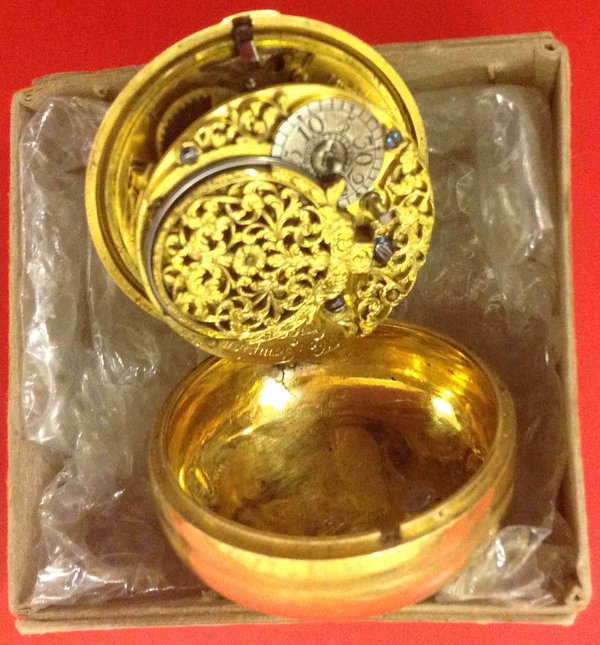

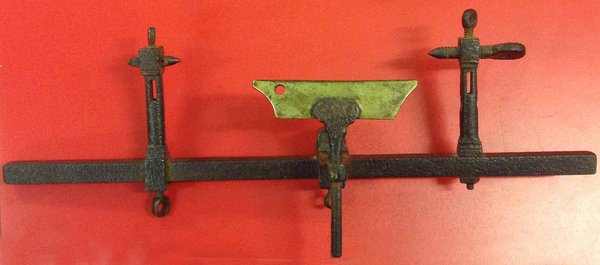
The evolution of the waterproof watch, 1851-1935. (March 2018)
When David Boettcher inherited two Rolex wristwatches (dated 1917/18) from his grandparents, an interest in Rolex was kindled. He learned that the Oyster was claimed to be the world's first truly waterproof watch when it was introduced by Rolex in 1926; this focused David's research into the development of the waterproof watch. Like most products, the Oyster was the result of a series of improvements throughout the second half of the nineteenth and the first quarter of the twentieth century. Searches revealed a waterproof pocket watch from as far back as 1851, when one was exhibited suspended in a bowl of fish at the Great Exhibition. David described the sequence of developments which were mainly driven by the requirements of explorers and the military, which led to the production of the Oyster.

Work in Progress (February 2018)
Members brought in their current projects. These included a slide-show of research into the use of squirrel designs on watches made during the sixteenth and seventeenth centuries, and photos of a walnut marquetry longcase made by one of our members to house a clock by William Grimes of c. 1690. One member showed components he has made for a case to house a minute repeating fob watch movement to convert it into a wristwatch. Its small size (30mm diameter) and 3 o'clock position winding crown make it ideal to be worn on the wrist. We were updated on progress on the making of six Harrison H3 Sea Clock replicas - pendulum design, manufacture and testing are the current project. Restoration of a pretty thirty hour alarm wall clock by William Gill of Maidstone was another subject for discussion as was a proof copy of a new book by Keith Bates: Early Clock and Watchmakers of the Blacksmiths Company, which will be published later this year.

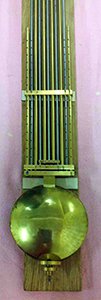
AGM (January 2018)
The forty-ninth AGM of the Northern Section was followed by two horologically themed DVDs. One had old movie footage from the 1920s of winding the three train clock at St Michael and All Angels' Church, Croston, Lancashire. The three train clock was made by WH Bailey & Co., in 1882 and installed at Croston the following year. The second DVD came from the National Museum Speelklok, Utrecht and featured the amazing 'Napoleon Clock' by Louis Moinet. This musical clock with automata was made in 1806 and presented to Napoleon by the people of Lyon.

